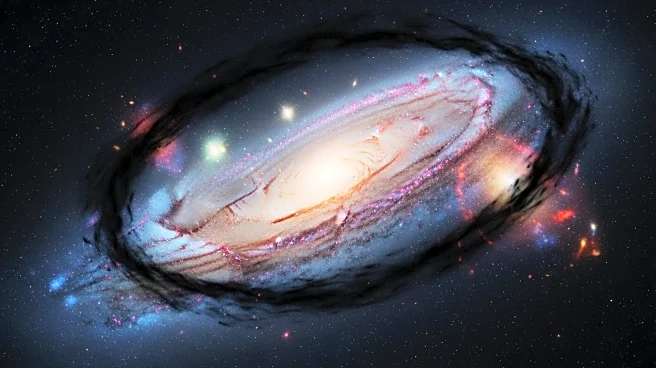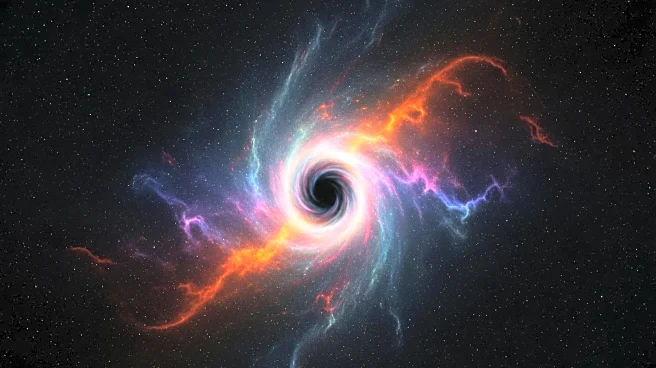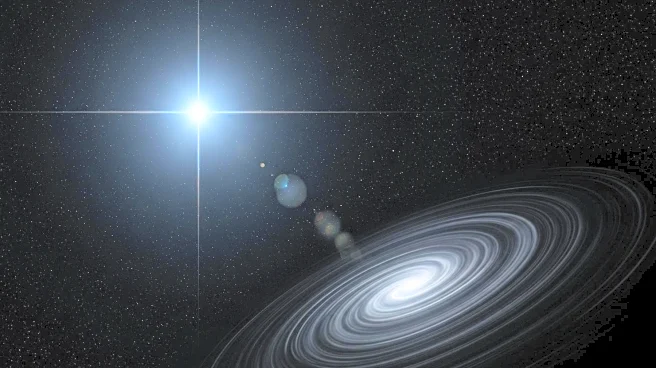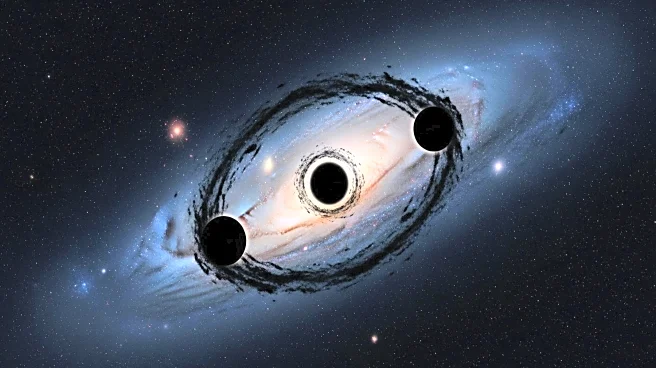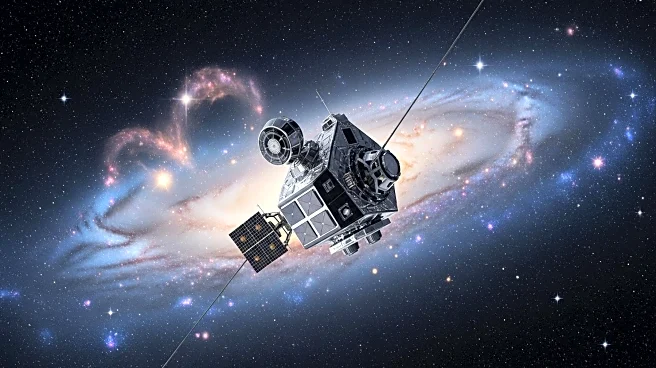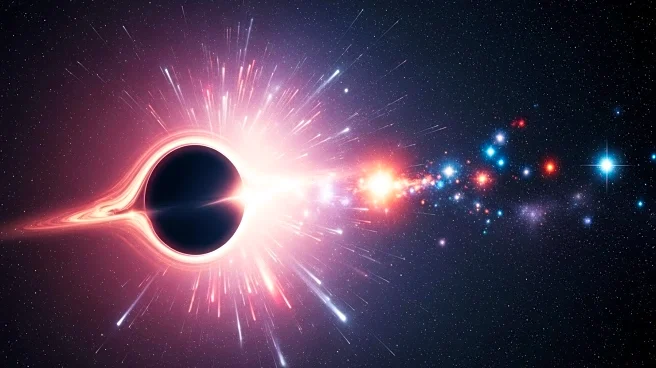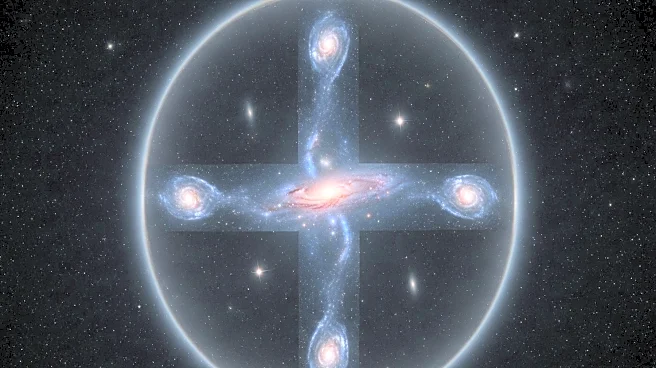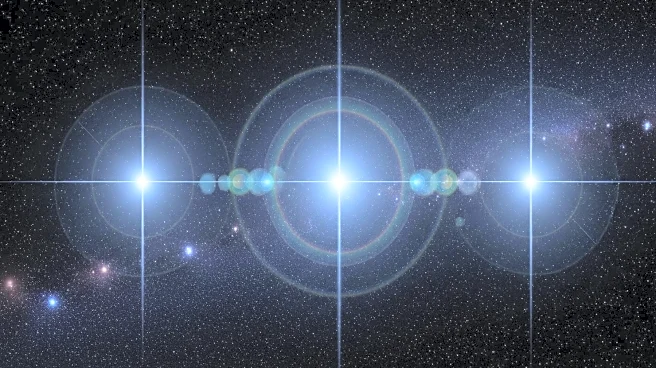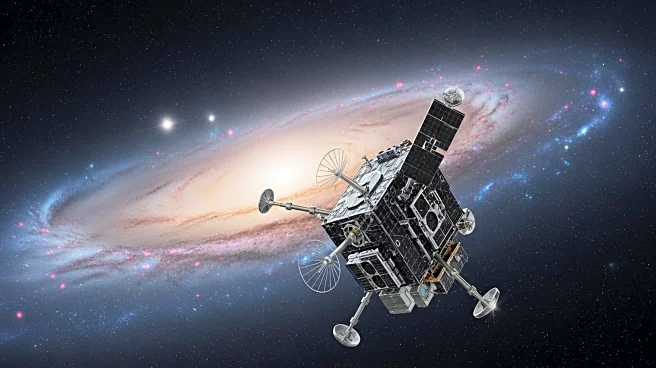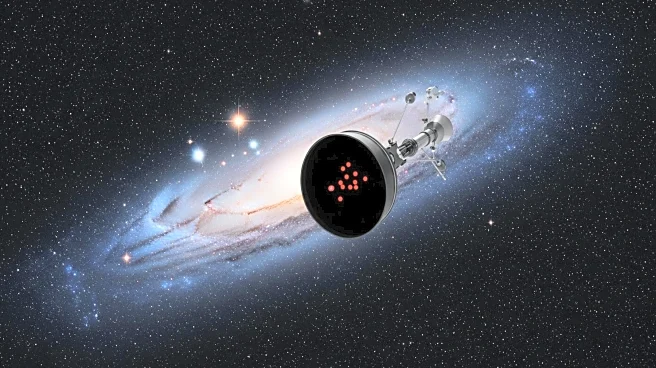What is the story about?
What's Happening?
A team of scientists led by Rutgers University has published a study in Astrophysical Journal Letters, revealing insights into how galaxies expand by tracing the invisible scaffolding of the universe created by dark matter. Using the largest-ever samples of Lyman-alpha emitters, the researchers studied galaxy clumping over billions of years, gaining a better understanding of the relationship between galaxies and surrounding dark matter. The study utilized data from the ODIN survey, focusing on the Cosmic Evolution Survey Deep Field, and examined three time periods shortly after the Big Bang. The findings suggest that Lyman-alpha emitting galaxies evolved into present-day galaxies like the Milky Way.
Why It's Important?
This research is significant as it enhances the understanding of galaxy evolution and the role of dark matter in shaping the universe. Dark matter acts as a gravitational 'glue,' pulling gas together to form galaxies and influencing their growth and merger. By identifying where dark matter is densest, scientists can refine models of the universe's structure, offering insights into cosmic evolution. The study's findings contribute to the broader scientific effort to understand the universe's large-scale structure and the processes driving galaxy formation.
What's Next?
Future studies as part of the ODIN survey will expand to include more galaxies, providing a more comprehensive view of the cosmic web. This ongoing research will continue to refine models of the universe's structure and deepen understanding of galaxy evolution. As scientists explore the implications of dark matter's distribution, they aim to uncover more about the universe's evolution and the role of dark matter in cosmic processes.
Beyond the Headlines
The study highlights the importance of dark matter in the universe's evolution, despite its invisibility to telescopes. By understanding where dark matter is concentrated, researchers can gain insights into the universe's history and the forces shaping its structure. This research underscores the complexity of cosmic evolution and the intricate interactions between visible and invisible matter.
AI Generated Content
Do you find this article useful?
